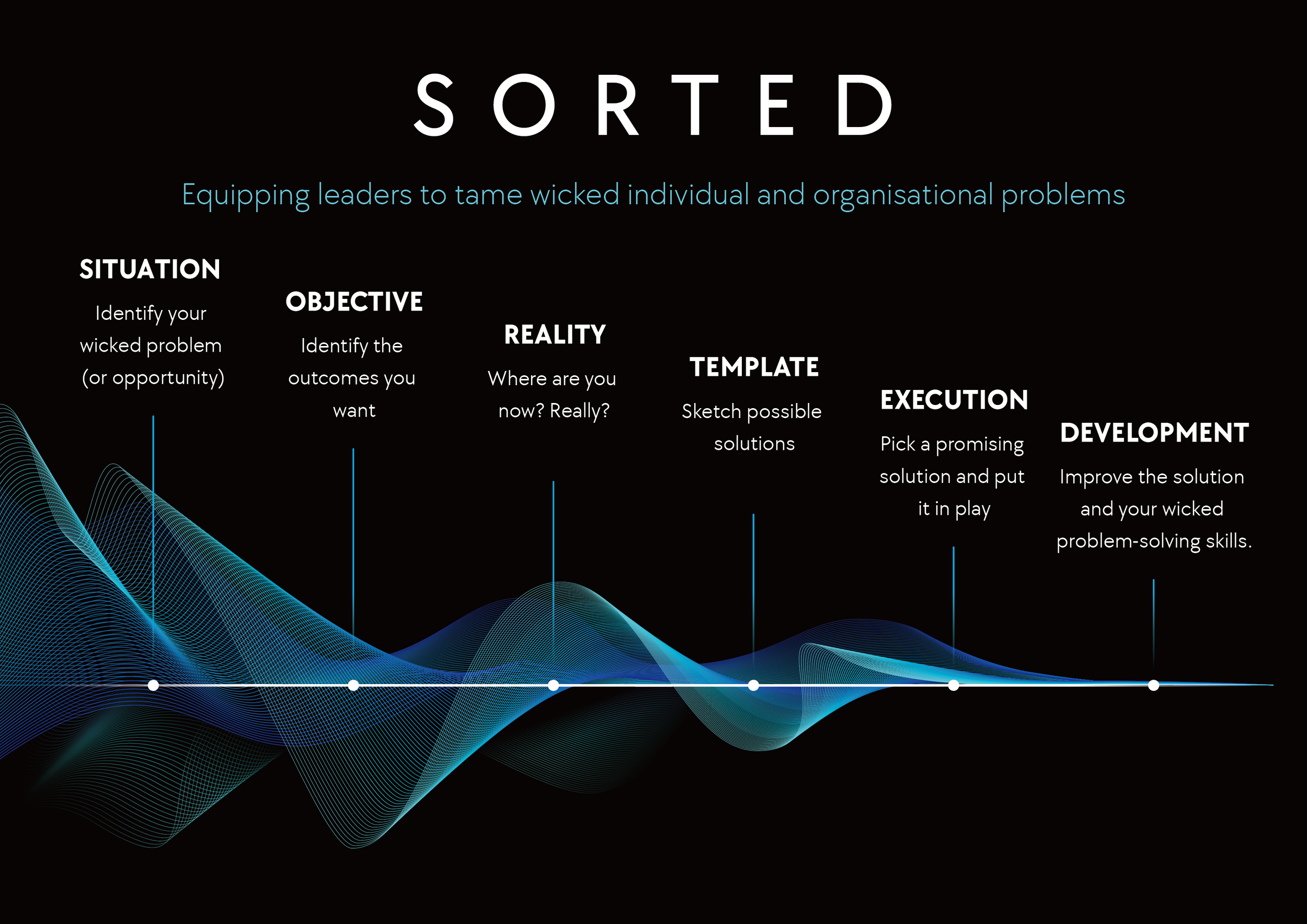How Do We Tackle Really Wicked Business Problems? 6 Steps
Wicked Problems Require Big Complex Solutions, Don’t They?
Solving wicked business problems can involve complex processes, but this is not always true. The approach to solving a wicked problem can vary depending on the situation and available resources. A simple solution may sometimes be effective in addressing a wicked problem. The key is understanding the problem thoroughly, gathering information from relevant sources, and applying critical, creative thinking to find an appropriate solution. A combination of both big complex processes and simple approaches may be necessary to solve a wicked problem in a business context.
Sorted: Six Steps To Tame Wicked Problems
I equip leaders to tame wicked individual and organisational problems, building trusted personal and professional relationships through six principles:
1. SITUATE - Identify your wicked problem (or opportunity)
2. OBJECTIVE - Identify the outcomes you want
3. REALITY - Where are you now? Really?
4. TEMPLATE - Sketch possible solutions
5. EXECUTE - Pick the most promising solution and put it in play
6. DEVELOP - Improve the solution and your wicked problem-solving skills.
How do I know it works?
My clients have dealt with all sorts of wicked strategic issues over the years: how to put together the best crisis response team, how to build a complex drainage system at an international airport (that’s secure from terrorism), how to plot scenarios for a major international food business, how to rebuild the production process of a best-selling small car, choosing between different business models (where there is no market leader).
And, when you apply it to case studies it works too.
How Can I Get Sorted?
Follow the principles. Remember the acronym. Test it on a problem you’ve had or one happening now.
Isn’t This Just Business Coaching Dressed Up?
Well, the core of coaching is there. But when you dig deeper, it’s a little different:
In Situating, you need to understand how to build situation awareness best.
In identifying Objectives, you need to identify purposeful and authentic goals.
Your Reality must be grounded in critical thinking.
Your Templates must be sketched through design thinking out of your experience and lessons from others.
Execution is achieving change through adopting a bias for action
Development requires continuous improvement and lifelong learning.
So yes, it’s business coaching but not as we know it.
Get It Sorted
Solving wicked business problems can involve complex processes, but this is not always true.
I equip leaders to tame wicked individual and organisational problems; building trusted personal and professional relationships through six principles (Situation, Objective, Reality, Template, Execute, Develop).
My clients have dealt with many wicked strategic issues over the years.
It’s coaching, but not as we know it. SORTED!
What Are You Thinking?
Let me know.

